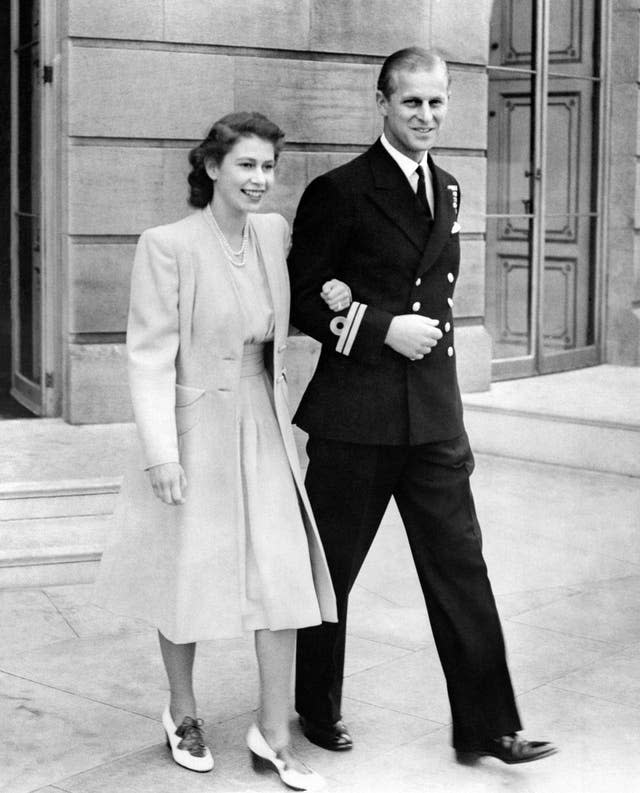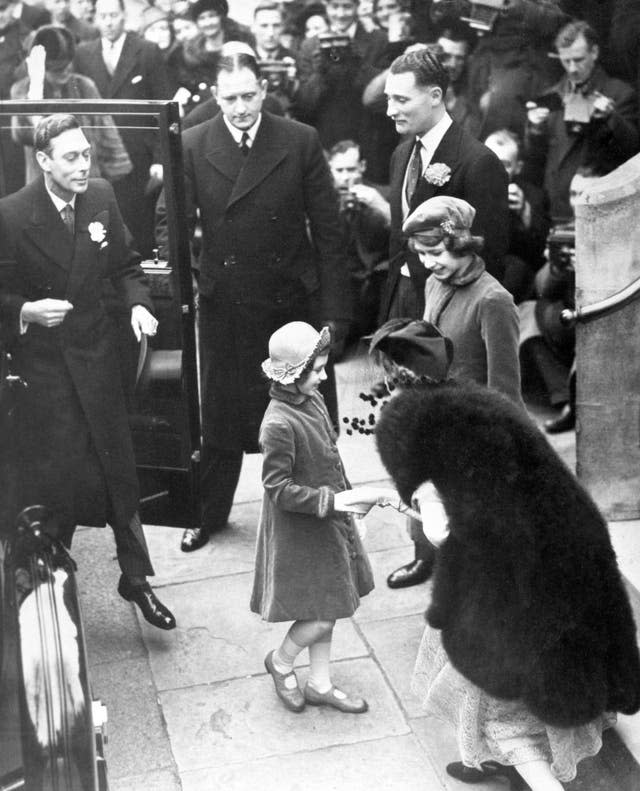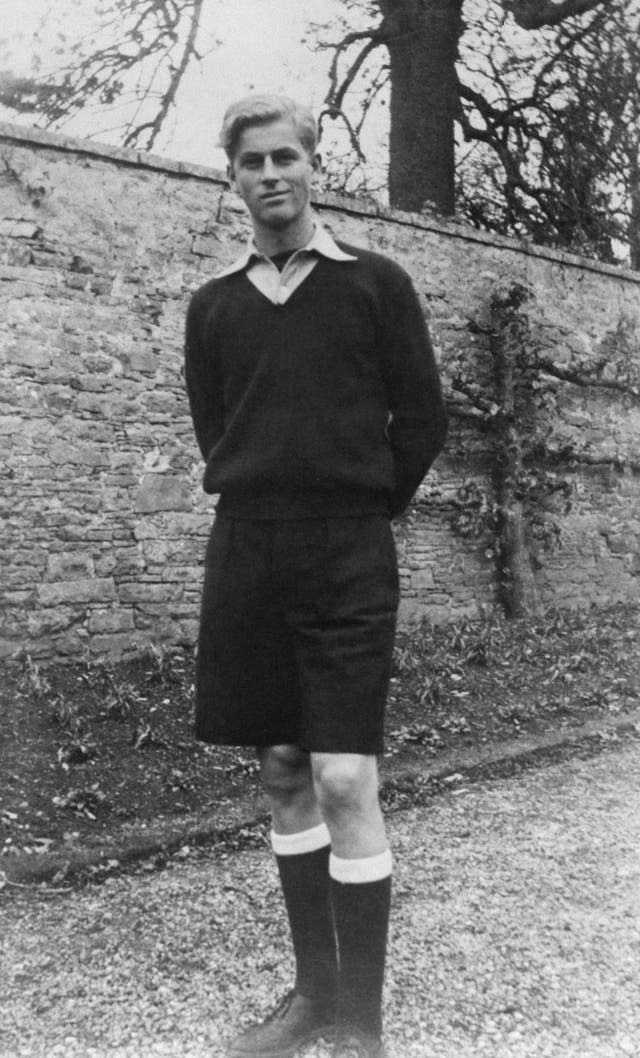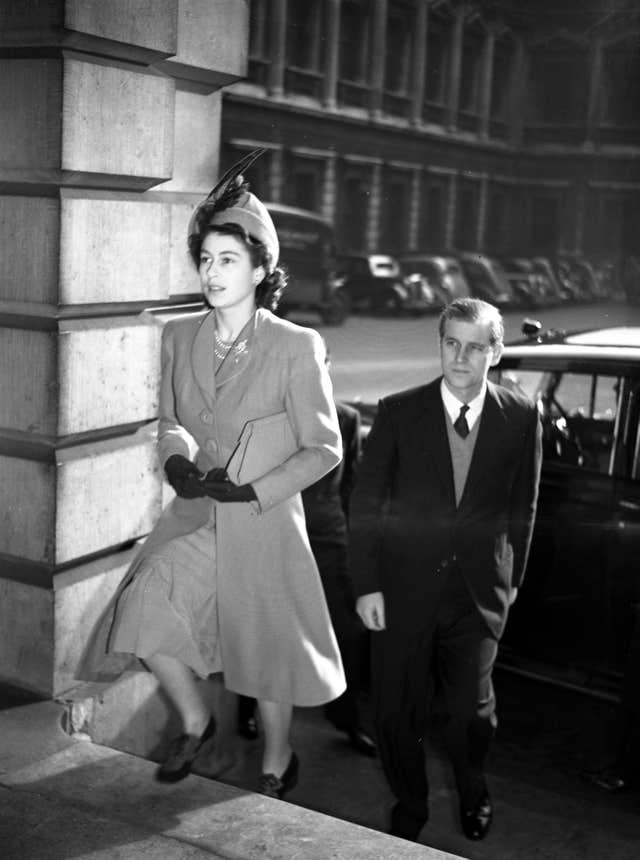The Queen fell in love with Philip at first sight as a teenager
He was a dashing naval cadet with royal roots and she was a young princess who would one day be queen.
The romance of Prince Philip of Greece and Princess Elizabeth sprang out of a summer encounter at the Royal Naval College in Dartmouth in 1939.

The future couple, who were distant cousins, had been at the same gatherings on a number of occasions.
When Philip was 13 and the princess was eight, they both attended the 1934 wedding of Philip’s cousin Princess Marina, later Duchess of Kent, and Elizabeth’s uncle, Prince George, Duke of Kent.
They were also both guests at the coronation of George VI in 1937.
However, it was at Dartmouth, when King George VI and Queen Elizabeth visited the naval college with their two daughters, that they had their first publicised meeting, in July 1939.

Philip, who was just 18, was introduced to 13-year-old Elizabeth at the house of the captain of the college, later Admiral Sir Frederick Dalrymple-Hamilton.
Two of the other cadets due to be there had contracted mumps, so Philip was the only one allowed to meet the royal visitors.
Handsome, blond-haired, athletic Philip caught Lilibet’s eye as he entertained her by jumping over tennis nets.
Marion Crawford, Elizabeth’s governess, recalled: “I thought he showed off a good deal.”
But the princess was entranced. “She never took her eyes off him the whole time,” wrote “Crawfie”.
“How good he is, Crawfie. How high he can jump,” the princess remarked.
Philip also joined the princess and her sister Margaret on the Royal Yacht Victoria and Albert for lunch, doing the same the next day, and Elizabeth was seemingly smitten.

They maintained a regular correspondence and met on several more occasions.
Philip was invited to spend the Christmas 1943 with the royal family at Windsor.
A doting Elizabeth kept a picture of him in her room while he was away.
In an attempt to prevent him being recognised and stop any gossip about their relationship, she later replaced the photograph, which showed a clean-shaven Philip, with one of him sporting a large beard.
But, by the end of the war, newspapers were already speculating about romance.
It has been suggested that they became unofficially engaged in the summer of 1946 while they were staying at Balmoral, but the official announcement was delayed until after Princess Elizabeth reached the age of 21 and returned from a tour of South Africa.
Stories that Philip had thoughts of marrying teenage Elizabeth when they met at Dartmouth were, according to the duke, wide of the mark.
He told biographer Basil Boothroyd: “Well, we’d met at Dartmouth, and as far as I was concerned it was a very amusing experience, going on board the yacht and meeting them, and that sort of thing, and that was that.
“Then I went to – did I go to Windsor? I think I came here to Buckingham Palace. Or I went to the theatre with them once, something like that.
“And then, during the war, if I was here, I’d call in and have a meal. I once or twice spent Christmas at Windsor, because I’d nowhere particular to go … I thought not all that much about it, I think.
“We used to correspond occasionally. You see it’s difficult to visualise. I suppose if I’d just been a casual acquaintance it would all have been frightfully significant.
“But if you’re related – I mean I knew half the people here, they were all relations – it isn’t so extraordinary to be on kind of family-relationship terms with somebody.
“You don’t necessarily have to think about marriage.
“I suppose one thing led to another. I suppose I began to think about it seriously, oh, let me think now, when I got back in ’46 and went to Balmoral.
“It was probably then that we, that it became, you know, that we began to think about it seriously, and even talk about it.
“And then there was their excursion to South Africa, and it was sort of fixed up when they came back. That’s really what happened.”
In July 1947, it was officially announced by Buckingham Palace that he was to marry Elizabeth.
Philip had applied for British nationality and in February 1947 became a naturalised British subject, renouncing his Greek royal title and adopting the surname of Mountbatten – thus he became known as Lieutenant Philip Mountbatten.
The style of His Royal Highness was authorised shortly before his marriage on November 20 1947 at Westminster Abbey and he was created Duke of Edinburgh, Earl of Merioneth and Baron Greenwich, and made a Knight of the Garter.

He was accorded by the Queen the style and title of a prince of the United Kingdom in February 1957.
There was really never anyone else in the Queen’s affections.
From early in her adolescence, she took a romantic interest in one man and there is no evidence that she ever seriously considered marrying anybody else.
Indeed, King George VI’s official biographer, Sir John Wheeler-Bennett, confirmed she fell for Philip at once on that pivotal weekend in Dartmouth, 1939.
“This was the man with whom Princess Elizabeth had been in love from their first meeting,” he wrote.

 Yahoo News
Yahoo News 
